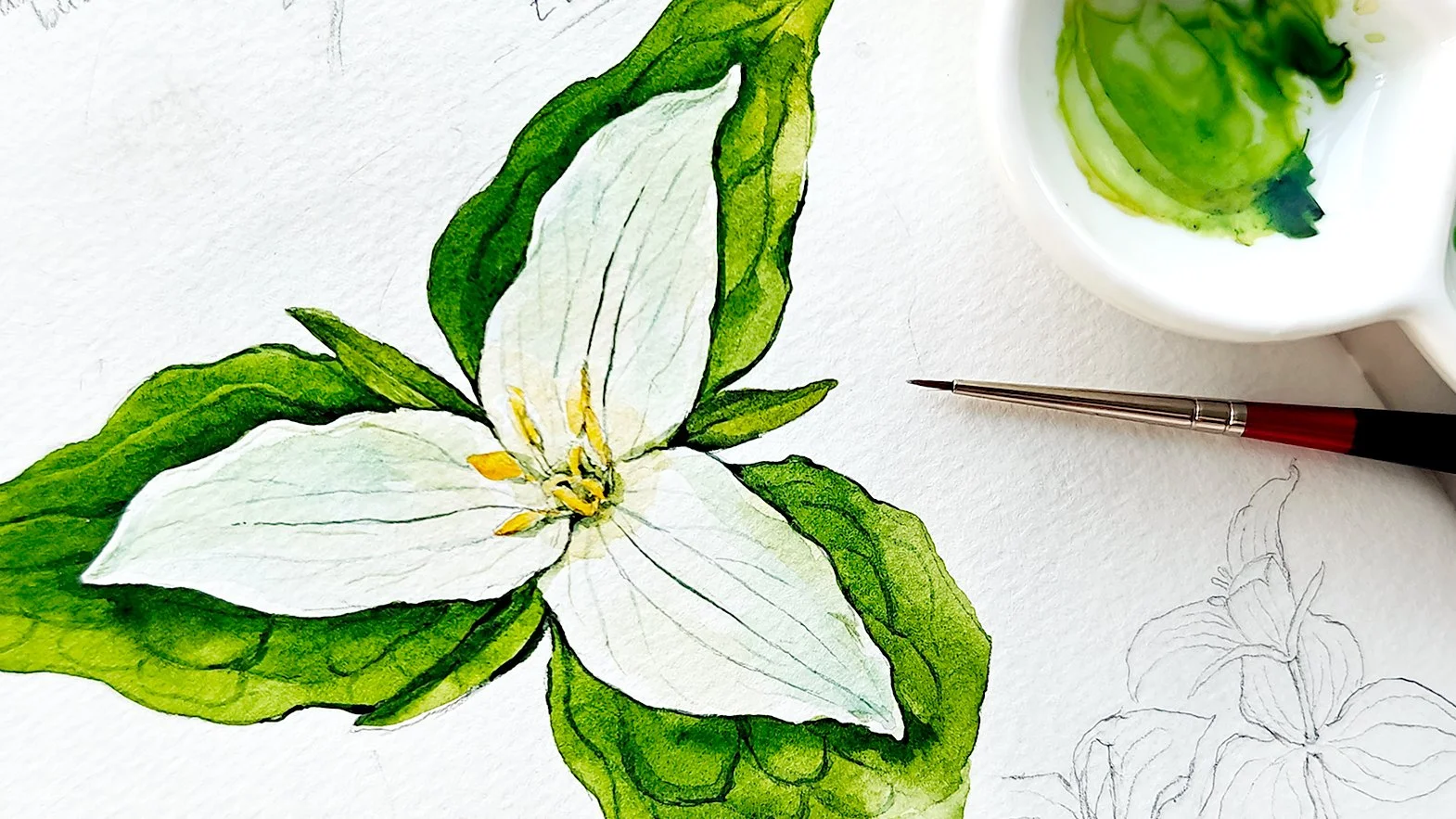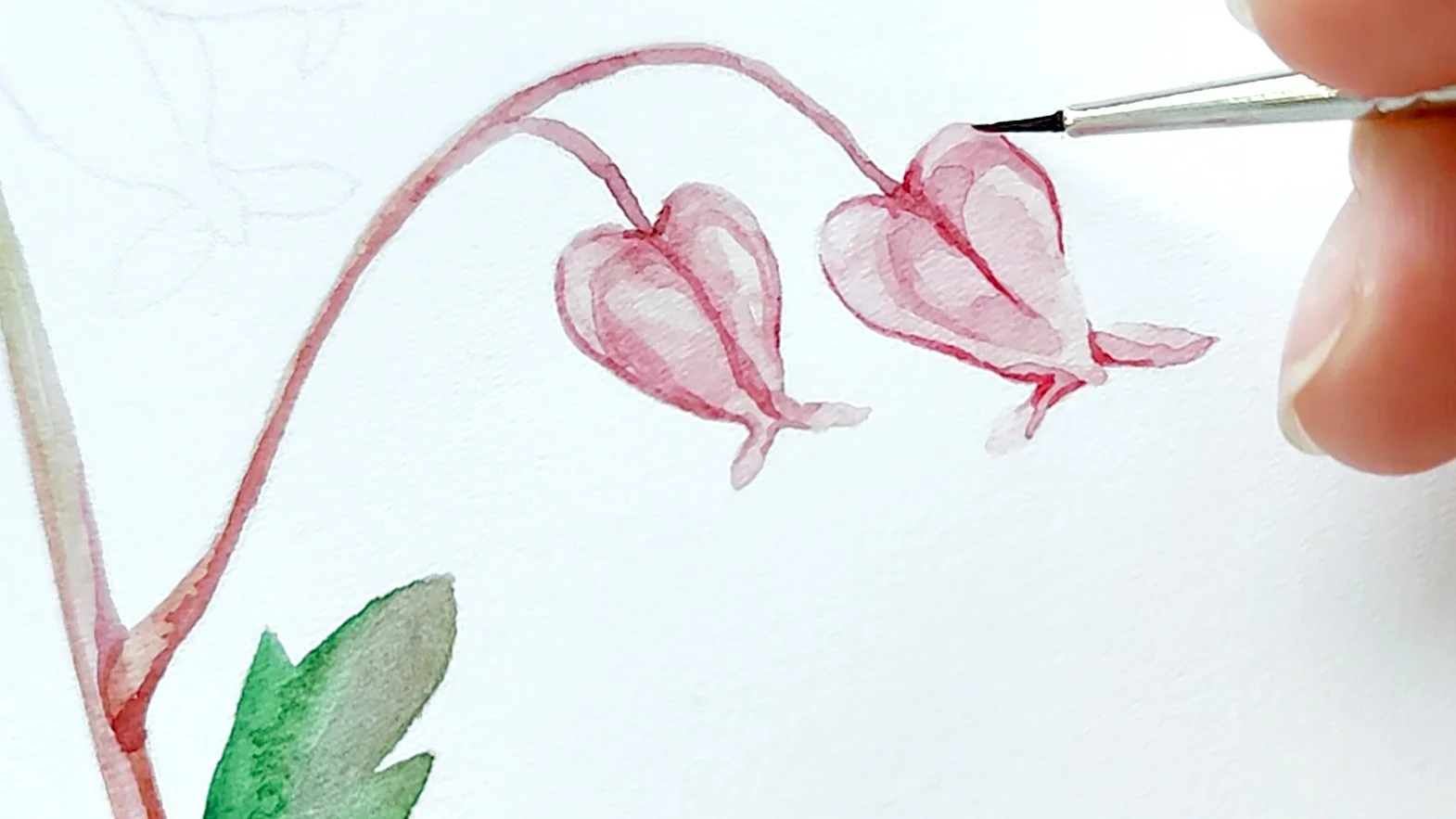7 Pacific Northwest Wildflowers to Paint — A Botanical Illustrator’s Guide
As a botanical watercolor illustrator living in the Pacific Northwest, I find endless inspiration in native wildflowers. These plants are not only beautiful subjects but also an important part of the region’s ecological and artistic heritage.
I’m honored to be featured by the Pacific Northwest Botanical Artists (PNBA)—an organization that celebrates excellence in botanical art and supports artists who work with scientific accuracy and creative expression. This recognition reflects my commitment to preserving and interpreting native flora through detailed, hand-painted watercolor illustrations.
To celebrate, I’m sharing seven of my favorite Pacific Northwest wildflowers to paint. These species offer stunning shapes, color palettes, and natural textures that are perfect for watercolor painting and botanical study.
1. Wild Rose (Rosa nutkana)
As the June birth flower and one of my personal signature subjects, this open-petaled pink rose captures the softness and strength of native blooms. Its rich greenery and delicate color transitions make it ideal for expressive hand-painted botanical illustrations.
Painting tip: Let your petals stay loose and expressive—wet-on-wet washes work beautifully for the soft pink blooms. Use deeper values at the petal bases to suggest depth.
2. Bunchberry (Cornus canadensis)
Bunchberry is a charming ground-cover plant native to the Pacific Northwest, easily recognized by its whorled leaves and petal-like bracts that surround a cluster of tiny white flowers. In late summer, these give way to bright red berries that add another burst of color. As a subject for painting, Bunchberry offers lovely contrasts—the crisp white blooms against rich green foliage, and later, the vibrant red berries nestled among the leaves.
Painting tip: Use a light hand with your greens to capture the freshness of the foliage, and try a white flower over a green background composition for added depth.
3. Red Columbine (Aquilegia formosa)
Known for its distinctive red and yellow nodding flowers, Red Columbine is a favorite among hummingbirds—and artists. I love capturing the complexity of its curved spurs and vibrant contrast using layered watercolor washes.
Painting tip: Use a fine brush to capture the elegant spurs and delicate details. Layer transparent reds and oranges for a glowing, fiery effect.
4. Trillium (Trillium ovatum)
A spring favorite, this elegant wildflower with three white petals is a Pacific Northwest icon. Its striking simplicity, symmetry, and bold green foliage are perfect for anyone interested in painting minimalist botanical compositions with depth and meaning.
Painting tip: Focus on capturing the subtle transitions of white or add soft purple or pink in aging petals. Use soft shadowing or darker background to bring out the delicate three-petal form without hard lines.
5. Scarlet Paintbrush (Castilleja spp.)
Vivid and bold, Paintbrush is one of the most eye-catching wildflowers in our region. With fiery red, orange, or yellow bracts and soft green foliage, it’s a dream to paint in watercolor. The textured petals and natural gradient are ideal for artists who enjoy expressive, freelance watercolor illustration with a vibrant palette.
Painting tip: Layer vibrant reds and oranges with minimal blending to mimic the wild, brushstroke-like look of the bracts. Let the strokes stay bold and directional to reflect the plant’s dynamic structure.
6. Pacific Bleeding Heart (Dicentra formosa)
Delicate pink hearts that dangle from arched stems—what’s not to love? This flower is romantic, soft, and full of movement, making it a rewarding addition to any watercolor wildflower painting project.
Painting tip: Keep the pinks and purples soft with diluted washes, and focus on the graceful, heart-shaped curves. Let the background foliage stay loose to emphasize the bloom.
7. Fireweed (Chamerion angustifolium)
A vibrant symbol of regeneration and summer abundance, fireweed features tall spikes of vivid pink-purple blooms. It’s often one of the first plants to colonize after a wildfire. As a subject for watercolor illustration, it’s a stunning choice for practicing vertical composition and capturing the energy of clustered, gradient-colored flowers.
Painting tip: Use a fine liner brush to capture the tall, slender stems and delicate magenta flowers. Let the blooms trail upward with soft purples and pinks, and suggest the lower seed pods with more abstract, flat washes.
Why Paint Pacific Northwest Wildflowers?
As a freelance watercolor illustrator and member of the PNBA, I see native plants not just as beautiful painting subjects but as vital elements of education, storytelling, and conservation. I often include native flora in my personal work to celebrate our local biodiversity.
Painting these wildflowers lets me combine fine art techniques with botanical accuracy, and I always encourage others—whether beginners or experienced artists—to explore this genre.
Learn watercolor botanical painting on Patreon
Join me on Patreon for in-depth weekly tutorials and step-by-step lessons in watercolor botanical illustration. Whether you're just starting out or looking to refine your skills, you'll get exclusive insights from a professional botanical artist.
Let’s Work Together
If you're looking for custom watercolor wildflower illustrations, or need a freelance botanical illustrator with regional expertise in Pacific Northwest plants, I’d love to hear from you!
Browse my portfolio or get in touch to start a collaboration.







